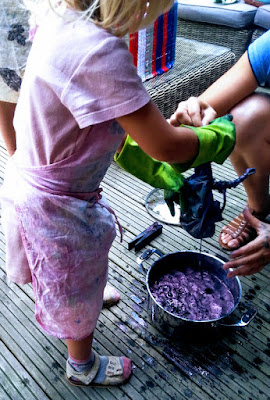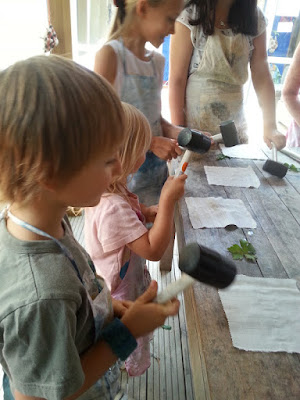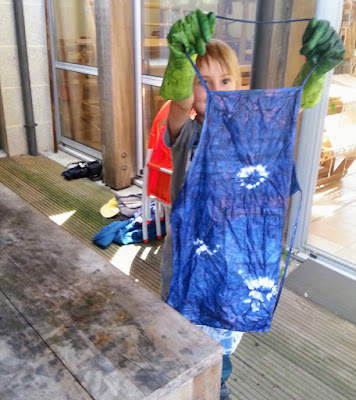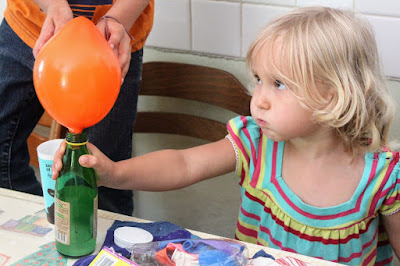 |
| All the different animals who provide us with fiber |
 |
| Really fun guess the animal fibre baskets |
I'd signed the children and I up for a natural dyeing workshop and we weren't disappointed. Not only was the welcome warm and the museum's exhibition interesting, the workshop itself delighted everyone. We were eight participants and we covered three forms of natural dye, cochineal (cochenille en français), indigo and leaves.
For the first two we experimented with tie-dying using elastic bands and dye baths.
 |
| Noah and Maya watch the bugs leak their dye! |
For the cochineal, the dried bugs were mixed with boiling water, vinegar and bicarbonate of soda before we placed material samples, one wool, one cotton in the dye bath and left them to soak until the end of the workshop.
The indigo bath was already prepared. We took it in turns to dip in aprons which we'd contorted with elastic bands. The later batches initially displayed an acid green colour alongside the dark blue but this faded as the aprons dried.
 |
| Noah dips his apron in the Indigo |
 |
| Maya's turn |
 |
| And last but not least, Lotta |
For the third technique we picked fresh leaves outside and then after placing the leaves under a thin piece of cotton, used a hammer to release their dye. The material was then placed in a special bath with a fixing agent.
 |
| Take the leaves |
 |
| Place the thing material over them |
 |
| And hammer... |
The children were really delighted with all the results especially the aprons. The leaf dying really surprised them and they are very eager to try this again at home with other leaves as well as flowers (I'll keep you posted!).
 |
| The big reveal to Noah's delight |
 |
| Apron's drying |



















